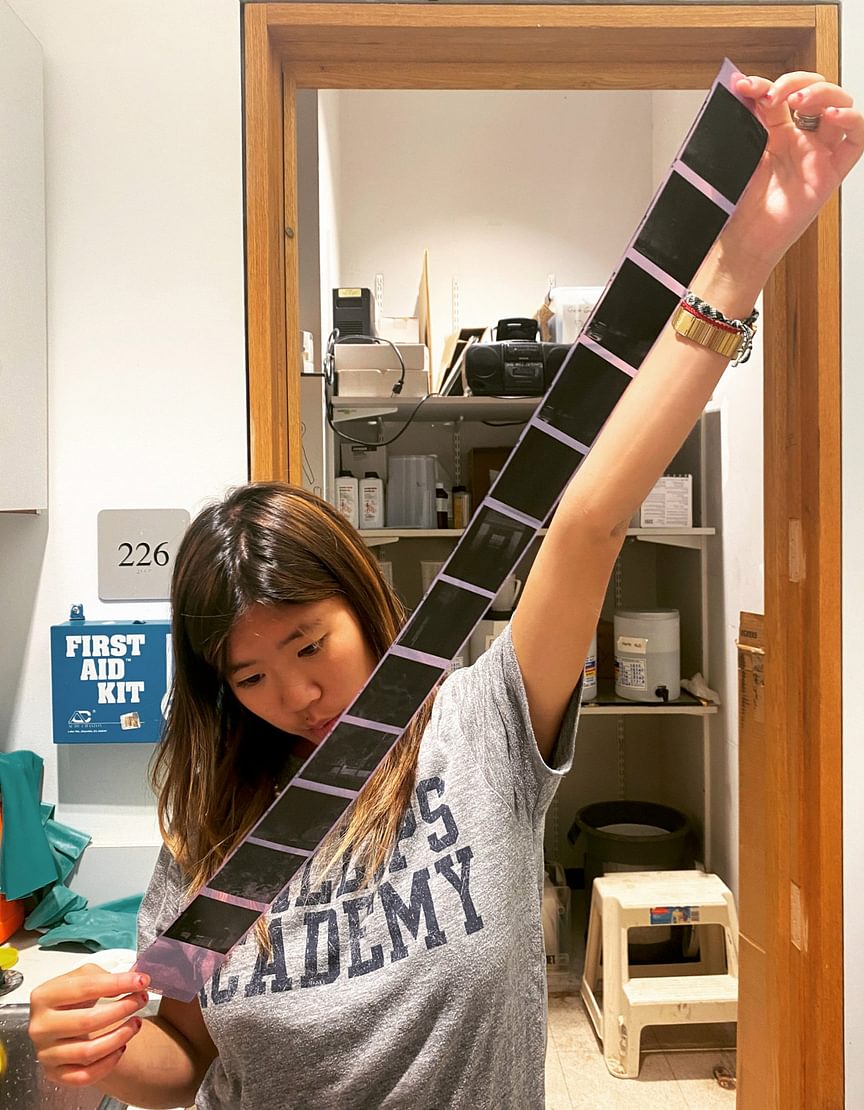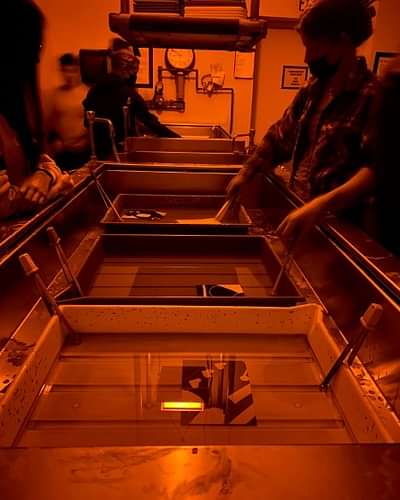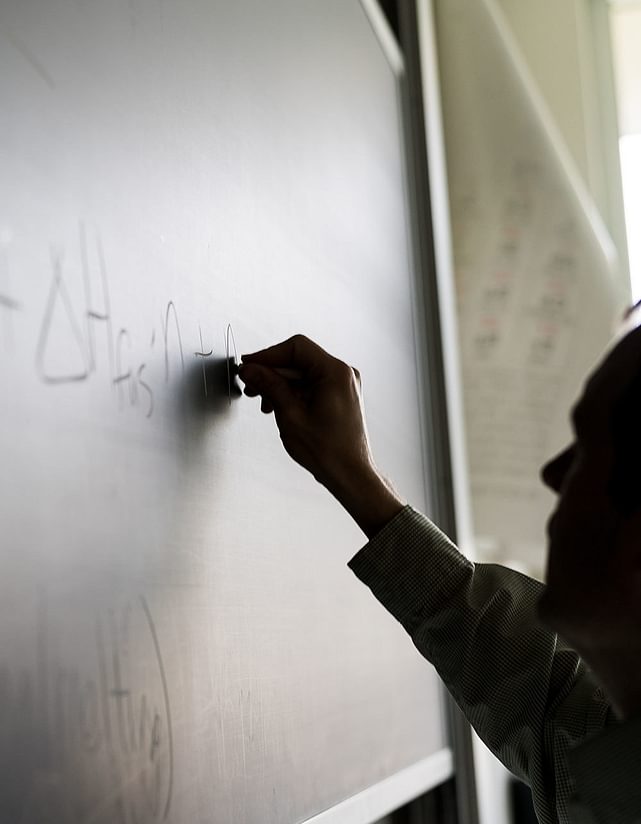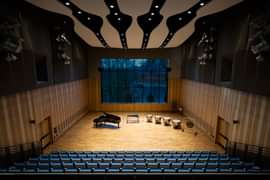
February 10, 2025
Art in the dark
Phones off, film loaded in this analog-era art courseby Tracy Sweet
Art Instructor Hector Membreno Canales shares 5 things that illuminate the beauty of film.
 Students look at their negatives in the darkroom. Photos courtesy of Hector Membreno Canales.
Students look at their negatives in the darkroom. Photos courtesy of Hector Membreno Canales.
- Film photography is important to teach, especially in a digital-dominant world. It’s both a fabulous vehicle to learn how light works, and it’s a practice that forces us to slow down. Students must look closely before snapping a picture. It forces them to be thoughtful about composition, light, film speed, and exposure.
- In Art 310 (Digital Photography), students may take hundreds, often thousands, of photographs in 10 weeks, but in film, they are limited to approximately 125 frames across 5 rolls of film.
- My students learn from early masters of the 18th and 19th century. They examine the invention of photography and the “flaneur” tradition of 35 mm as exemplified in the work of artists such as Henri Cartier-Bresson, Helen Levitt, Robert Frank, and many others.
- The time in the darkroom can be tedious, at times discouraging, but it can also be incredibly rewarding as an artist. It encourages students to work through the chemistry process to create what they had envisioned.
- Teaching this course makes me a better teacher and photographer. I’m constantly trouble shooting assignments, working through camera malfunctions, and darkroom challenges.
Prior to joining the faculty at Andover, Hector spent 10 years as a US Army photographer. His work has been published by The New York Times, The New Republic, The Columbia Journalism Review, NPR, CNN, and L’Oeil de la Photographie.




